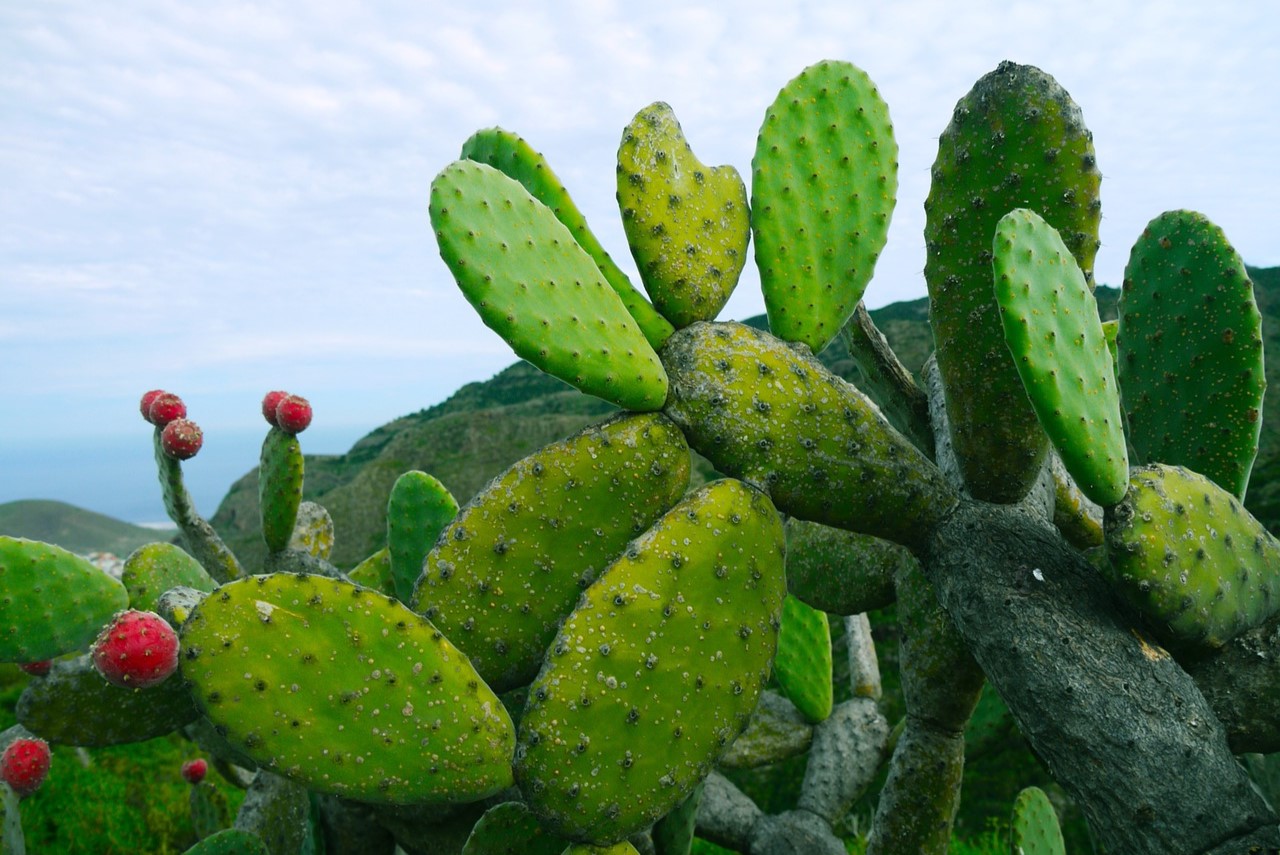
Nopal, also known as prickly pear cactus, is a fascinating plant with a rich history and numerous benefits. Native to Mexico, this versatile cactus has been used for centuries in traditional medicine, cuisine, and even as a natural dye. Its pads, called nopales, and its fruit, known as tunas, are both edible and packed with nutrients. But what makes nopal so special? From its ability to thrive in arid conditions to its potential health benefits, nopal is more than just a plant. Whether you're curious about its uses, nutritional value, or cultural significance, there's plenty to learn about this remarkable cactus. Let's dive into 20 intriguing facts about nopal that might surprise you!
Key Takeaways:
- Nopal, also known as prickly pear cactus, is a versatile plant packed with nutrients and health benefits. From regulating blood sugar to supporting the environment, it's a superfood with a positive impact on both our health and the planet.
- Whether grilled, juiced, or used to make jelly, nopal offers a delicious and nutritious addition to meals. Its drought-resistant nature and soil erosion prevention make it an eco-friendly choice for sustainable agriculture and environmental conservation.
What is Nopal?
Nopal, also known as prickly pear cactus, is a versatile plant native to Mexico. It's celebrated for its culinary, medicinal, and ecological benefits. Let's dive into some fascinating facts about this remarkable plant.
-
Nopal is a cactus species: Nopal belongs to the Opuntia genus, which includes various species of cacti. Its flat, paddle-shaped pads are a distinctive feature.
-
Edible parts: Both the pads (called nopales) and the fruit (known as prickly pears or tunas) are edible. They are used in a variety of dishes, from salads to desserts.
-
Rich in nutrients: Nopal is packed with vitamins A, C, and K, as well as calcium, magnesium, and potassium. It's a nutritious addition to any diet.
-
High fiber content: The pads are an excellent source of dietary fiber, which aids in digestion and helps maintain a healthy gut.
-
Low in calories: Despite being nutrient-dense, nopal is low in calories, making it a great option for those looking to manage their weight.
Health Benefits of Nopal
Nopal isn't just a tasty addition to meals; it also offers numerous health benefits. Here are some key advantages of incorporating nopal into your diet.
-
Blood sugar regulation: Studies suggest that nopal can help regulate blood sugar levels, making it beneficial for people with diabetes.
-
Anti-inflammatory properties: Nopal contains antioxidants and anti-inflammatory compounds that can help reduce inflammation in the body.
-
Cholesterol management: Regular consumption of nopal may help lower bad cholesterol (LDL) levels and improve heart health.
-
Boosts immune system: The high vitamin C content in nopal supports a strong immune system, helping the body fight off infections.
-
Supports liver health: Nopal has been shown to have hepatoprotective effects, meaning it can help protect the liver from damage.
Culinary Uses of Nopal
Nopal is a staple in Mexican cuisine, but its culinary uses extend far beyond traditional dishes. Here are some ways to enjoy nopal in your meals.
-
Grilled nopales: The pads can be grilled and served as a side dish or added to tacos and salads.
-
Nopalitos: This dish involves cooking diced nopal pads with tomatoes, onions, and spices. It's a flavorful addition to any meal.
-
Nopal juice: Blending nopal pads with fruits and vegetables creates a nutritious and refreshing juice.
-
Prickly pear jelly: The fruit can be used to make a sweet and tangy jelly, perfect for spreading on toast or adding to desserts.
-
Nopal tortillas: Incorporating nopal into tortilla dough adds a unique flavor and boosts the nutritional value of your tacos and wraps.
Environmental Benefits of Nopal
Nopal isn't just good for your health; it's also beneficial for the environment. Here are some ways this resilient plant contributes to ecological sustainability.
-
Drought-resistant: Nopal thrives in arid conditions, making it an excellent crop for regions with limited water resources.
-
Soil erosion prevention: The extensive root system of nopal helps prevent soil erosion, maintaining the integrity of the land.
-
Carbon sequestration: Nopal plants absorb carbon dioxide from the atmosphere, helping to mitigate climate change.
-
Biodiversity support: Nopal provides habitat and food for various wildlife species, supporting biodiversity in its native regions.
-
Sustainable agriculture: Growing nopal requires minimal inputs, making it a sustainable option for farmers looking to reduce their environmental impact.
The Final Scoop on Nopal
Nopal, also known as prickly pear cactus, packs a punch with its nutritional benefits and medicinal properties. From aiding digestion to regulating blood sugar, this versatile plant has earned its spot in kitchens and medicine cabinets alike. Rich in fiber, antioxidants, and essential vitamins, nopal can boost overall health. Plus, it’s a sustainable crop, thriving in arid climates where other plants struggle.
Incorporating nopal into your diet can be as simple as adding it to smoothies, salads, or stir-fries. Whether you’re looking to improve gut health, manage diabetes, or just try something new, nopal offers a tasty and nutritious option. So next time you see this spiky plant, remember its impressive benefits and consider giving it a try. Your body will thank you!
Frequently Asked Questions
Was this page helpful?
Our commitment to delivering trustworthy and engaging content is at the heart of what we do. Each fact on our site is contributed by real users like you, bringing a wealth of diverse insights and information. To ensure the highest standards of accuracy and reliability, our dedicated editors meticulously review each submission. This process guarantees that the facts we share are not only fascinating but also credible. Trust in our commitment to quality and authenticity as you explore and learn with us.


